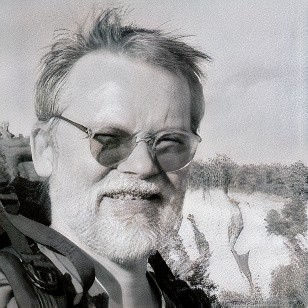Dark matter, gas, and stars come together throughout the universe to form dwarf, spiral, and elliptical galaxies. They subsequently evolve through star formation and feedback processes, with the importance of the mechanism varying with the galaxy's redshift and environment. Astronomers at Columbia study galaxies with observations, simulations and theory in a quest to understand the distribution and interplay of baryons and dark matter in them. Studies of the distribution of cold gas in the universe reveal the methods in which star formation fuel reaches a galaxy, and comparisons to star formation rates provide information on how efficiently this gas is consumed. The distribution and chemical composition of stars in galaxies can trace the merger history of a galaxy when combined with models. There are also active studies of the physics of the interstellar medium in galaxies, active galactic nuclei, the intergalactic medium, and laboratory studies of relevant atomic physics within Columbia's strong Extragalactic and Galactic astronomy group.
Galaxies & the ISM
Affiliated Faculty

Associated Faculty
Ruth Angus
Adjunct Asst. Professor, Astronomy; Assistant Curator, AMNH
Research Interests

Astronomy Faculty
Greg Bryan
Professor, Astronomy; Chair, Astronomy
Research Interests

Postdoctoral Researcher
Rachel Cochrane
Postdoctoral Research Scientist, Astrophysics Lab
Research Interests

Postdoctoral Researcher
Emily Cunningham
Postdoctoral Fellow, Astronomy
Research Interests

Research Scientist
Shy Genel
Adjunct Associate Research Scientist, Astrophysics Lab
Research Interests

Astronomy Faculty
Zoltan Haiman
Professor, Astronomy; Professor, Physics
Research Interests

Associated Faculty
Colin Hill
Assistant Professor, Physics
Research Interests

Postdoctoral Researcher
Kartheik Iyer
Postdoctoral Fellow, Astronomy
Research Interests

Astronomy Faculty
Kathryn Johnston
Professor, Astronomy
Research Interests

Associated Faculty
Laura Kay
Professor, Physics & Astronomy, Barnard
Research Interests

Postdoctoral Researcher
Hui Li
Postdoctoral Fellow, Astronomy
Research Interests

Lecturer
Nicholas Luber
Lecturer, Astronomy
Research Interests

Associated Faculty
Mordecai-Mark Mac Low
Adjunct Professor, Astronomy; Professor and Curator, AMNH
Research Interests

Associated Faculty
Reshmi Mukherjee
Professor, Physics & Astronomy, Barnard
Research Interests

Astronomy Faculty
Melissa Ness
Assistant Professor, Astronomy
Research Interests

Astronomy Faculty
Jeremiah Ostriker
Professor, Astronomy
Research Interests

Astronomy Faculty
Frederik Paerels
Professor, Astronomy; Director of Undergraduate Studies, Astronomy
Research Interests

Postdoctoral Researcher
Viraj Pandya
NASA Hubble Postdoctoral Fellow, Astronomy
Research Interests

Postdoctoral Researcher
Vincent Picouet
Postdoctoral Research Scientist, Astrophysics Lab
Research Interests

Astronomy Faculty
Mary Putman
Professor, Astronomy
Research Interests

Lecturer
Amanda Quirk
Lecturer, Astronomy
Research Interests

Research Scientist
Daniel Wolf Savin
Senior Research Scientist, Astrophysics Lab
Research Interests

Astronomy Faculty
David Schiminovich
Professor, Astronomy; Co-Director, Astrophysics Lab
Research Interests

Astronomy Faculty
Jacqueline van Gorkom
Rutherfurd Professor, Astronomy











